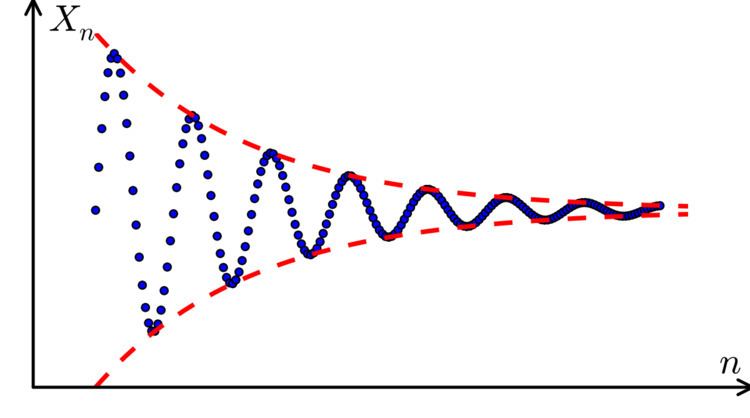 | ||
The Cauchy convergence test is a method used to test infinite series for convergence. It relies on bounding sums of terms in the series. This convergence criterion is named after Augustin-Louis Cauchy who published it in his textbook Cours d'Analyse 1821.
Contents
Statement
A series
holds for all n > N and p ≥ 1.
Explanation
The test works because the space R of real numbers and the space C of complex numbers (with the metric given by the absolute value) are both complete. Then the series is convergent if and only if the partial sum
is a Cauchy sequence.
A sequence of real or complex numbers
We will assume m > n and thus set p = m − n.
Showing that a sequence is a Cauchy sequence is useful since we do not need to know the limit of the sequence in question. Cauchy's convergence test can only be used in complete metric spaces (such as R and C), which are spaces where all Cauchy sequences converge. We need only show that its elements become arbitrarily close to each other after a finite progression in the sequence. There are computer applications of the Cauchy sequence, in which an iterative process may be set up to create such sequences.
Proof
We can use the results about convergence of the sequence of partial sums of the infinite series and apply them to the convergence of the infinite series itself. The Cauchy Criterion test is one such application. For any real sequence
converges if and only if for every
m ≥ n ≥ N imply
Probably the most interesting part of [this theorem] is that the Cauchy condition implies the existence of the limit: this is indeed related to the completeness of the real line. The Cauchy criterion can be generalized to a variety of situations, which can all be loosely summarized as "a vanishing oscillation condition is equivalent to convergence".
This article incorporates material from Cauchy criterion for convergence on PlanetMath, which is licensed under the Creative Commons Attribution/Share-Alike License.
